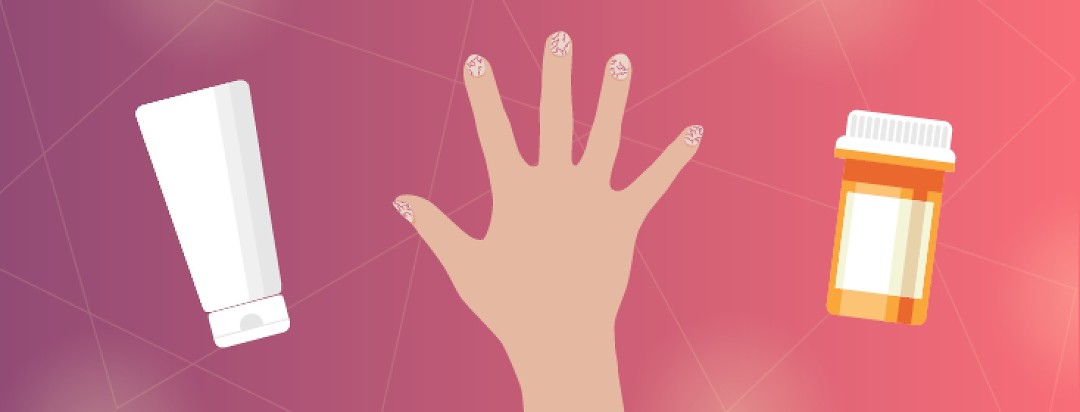Treatment Options for Nail Psoriasis
With psoriatic arthritis, there is a risk of developing nail psoriasis. This risk is so significant that it is estimated that 80-90% of individuals with plaque psoriasis, and an even more substantial percentage of those with psoriatic arthritis, will develop nail bed or nail matrix symptoms.
These symptoms are often hard to predict and can vary significantly from person to person. Because of this, past studies have lacked common standards for comparing the response of nail psoriasis to specific treatment options and have made it difficult to determine which treatments are "the best."
However, the answer to this question may be much more challenging than previously thought, as nail psoriasis can present in many different ways, and individuals can respond utterly differently to identical treatments.
Common treatments for nail psoriasis
Right now, the common therapies for nail psoriasis include topical methods, intralesional methods, conventional systemic methods, biologic systemic methods, and non-pharmacological treatment options.
We gathered information on alf these treatments to help yodetermineut what methods may be best for you. Of course, no treatment option will be perfect, and discussing these with your healthcare provider is essential.
Additionally, nail growth is slow, as is the response to treatments, so symptoms may not alleviate in any of these methods for 12 weeks to a year after starting.
Topical nail treatments
Topical treatments are generally recommended for nail psoriasis that is relatively mild and without signs of severe PsA or plaque psoriasis accompanying symptoms. The most effective way to utilize topical treatments is to determine where the nail psoriasis is located, as some treatments work better for nail bed versus nail matrix psoriasis.
Topical treatments include topical corticosteroids, corticosteroids combined with other modalities such as vitamin D3 analogs, and topical calcineurin inhibitors, among others.
Additionally, corticosteroids can go beyond the topical level and be injected intralesionally if the nail psoriasis is more severe. Topical methods are generally applied twice daily and have relatively mild side effects.
Systemic nail treatments
Systemic treatments take measures a step further and get the whole body involved. This paves the way for additional side effects that can often be severe, such as renal dysfunctions, hypertension, paresthesia, gastrointestinal disorders, or fatigue.
Systemics have often shown moderate improvement in nail psoriasis but are reserved for more severe cases or cases in which significant PsA or plaque psoriasis accompanies the nail symptoms.
Systemic treatments include methotrexate, cyclosporine, and retinoids, and often cannot be used for prolonged periods of time.
Biologic nail treatments
Biologic treatments are very similar to systemic therapies, both in usage and side effects; however, biologic medicines are newer and, thus, more expensive and less researched.
Many biologics target the immune response and include anti-tumor necrosis factor-alpha (infliximab, adalimumab, etanercept, and golimumab), inhibit interleukin (IL)-17 (secukinumab, ixekizumab), or inhibit IL-12/23 (ustekinumab).
Biosimilars to these medications are currently being developed, increasing the prevalence of biologics and decreasing their cost.
Non-pharmalogical nail treatments
Non-pharmacological treatments are the least researched of all therapies and have shown the least amount of promise. For this reason, they are not recommended as a first-line treatment modality for nail psoriasis and are only recommended in cases where other treatment options have failed.
Treatments in this category include laser treatment, phototherapy, and radiotherapy. As always, it is crucial to keep an open line of communication with your healthcare provider to determine what treatment plan is right for you.
Much more research is on the rise for treating PsA, plaque psoriasis, and nail psoriasis, whichopefully tod more light on the complex management issue.

Join the conversation